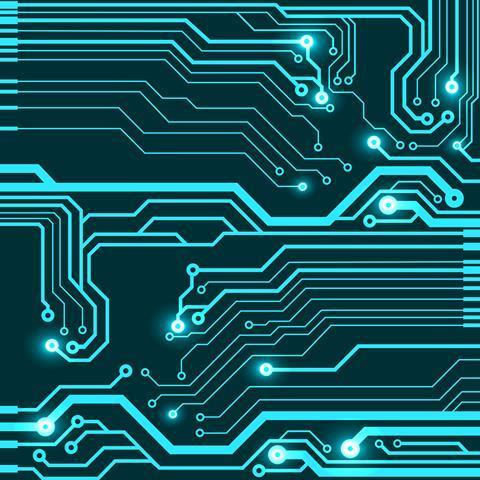Secrets of the trade: Jonathan Hare explores the chemistry behind your favourite gadgets

Printed circuit boards (PCB) are found in almost all electronic devices including mobile phones, iPods, computer motherboards, TVs, calculators, washing machines, radios and car electronics. A PCB is a rugged and effective way of wiring-up electronic components to create electronic devices.
The basic PCB consists of a thin laminate or fibreglass board covered on one side with a thin layer of copper. The copper is etched to form a complex circuit of ‘tracks’ that are used to wire-up and interconnect the electronic components attached to the board. Modern PCBs in mobile phones and computers usually consist of a number of very thin boards sandwiched together to make a complex multilayer PCB.
Etching a connection
The PCB track pattern is made by etching away the unwanted copper to leave the desired interconnections. Firstly an etch-resistant pattern – the resist – is drawn on to the copper. This can be painted on using a suitable marker pen or screen print techniques can be used. The PCB is then placed in an etch that removes all the bare uncovered copper, leaving the covered copper (the tracks) untouched.
Various chemicals can be used as an etch to remove the copper. Nitric acid and ammonium persulfate can be used but iron(iii) chloride is standard. The reaction of copper with FeCl3 is a two step redox reaction:
FeCl3 + Cu → FeCl2 +CuCl
FeCl3 + CuCl → FeCl2 + CuCl2
Warming and agitating the etch solution (using vibrations and air bubbles) can greatly speed up the process and produce a cleaner finish. After etching, cleaning and drilling, the PCBs are often dipped in a tin(II) chloride (SnCl2) compound to deposit a thin film of tin on the copper tracks. This provides a surface that does not tarnish as quickly as the pure copper but is still easy to solder. In addition to the chemical etching methods, modern CNC micro-milling machines are also being used to create PCBs. Channels can be cut into the bare copper using a tiny cutting tool to create complex tracks and wiring circuitry.
Making a printed circuit board

- Cut the printed circuit board to the correct size and clean it to remove all the dirt and grease.
- Draw on the resist artwork pattern, shown in blue (I wrote ‘The Mole’ and ‘RSC’ and drew in three pads / connections for a resistor, LED and battery).
- Etch it for 10–15 minutes.
- Remove the board from etch and wash it.
- Remove the resist with solvent to reveal the copper tracks.
- Drill and fit the components through the holes.
- Solder the components’ leads to the copper tracks. With the PCB turned over you can see the simple LED circuit on the fibre side of the board.
Originally published in The Mole









No comments yet